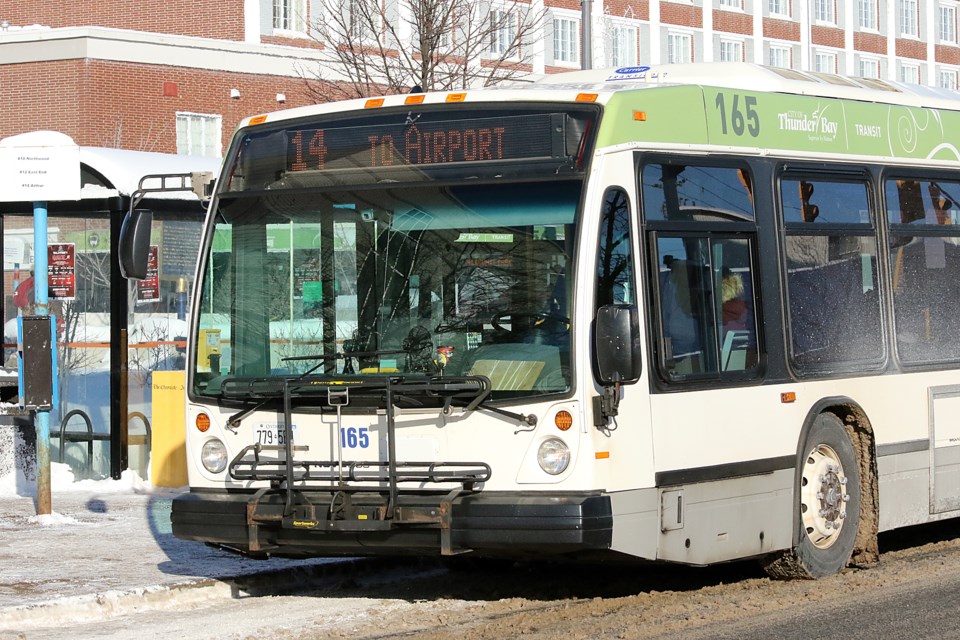THUNDER BAY - The future of Thunder Bay Transit may look very similar for some but very different for others, with changes to the frequency of routes, the addition of a new transfer hub in Westfort, and replacing regular Neebing buses with an on-demand service.
The proposed changes are part of Thunder Bay Transit’s Route Optimization Project, which has been ongoing since October 2017. The purpose of the project is to find service improvements that are cost neutral.
According to Brad Loroff, manager of transit with the city of Thunder Bay, more than four million trips are made by transit per year. Out of the 17 routes currently operating, more than 50 per cent of those trips are made on three primary routes, which include the crosstown routes, Memorial routes, and the mainline routes.
“We need to look at how to use our service hours in a different way so it doesn’t cost the city any more money,” Loroff said.
Some of the concerns raised by riders include a lack of direct routes to different parts of the city and key destinations, infrequent service, and being forced to make connections that are not accommodated at a service hub.
But in order to optimize routes without instituting additional costs to the city, transit staff and Stantec Consulting needed to develop new ways of improving services.
“You will see improvement to service on some routes that is coming at the expense of some of the lesser performing routes,” Loroff said.
For example, service to the East End runs every 30 minutes until 5:30 p.m on weekdays with no service on Sunday or the evenings. The new plan would see 60 minute weekday service but introduce Sunday and evening service.
Other significant changes include the addition of a Westfort transfer hub to provide better transfers on the south side of the city and the elimination of the Neebing and Mission Service.
“What we are proposing to do there is an alternate on-demand type of service,” Loroff said. “We would use a smaller vehicle type, people would have to call in to make trip arrangements. We don’t know what that looks like yet.”
Loroff added that other municipalities contract out taxi companies to pick up people and drive them to the nearest bus stop.
As part of the Route Optimization Project, the city is holding several public consultation sessions to allow people to come in and provide feedback on the proposed changes.
So far, Loroff said the feedback has been mixed, but even receiving negative feedback is an important part of the process.
“Any time someone comes up and said this isn’t going to work for me, that’s why we are doing this, to make note of that so we can go back and revisit some of the concerns,” Loroff said.
Frequent transit user, Perry Beaubais, who works near the Thunder Bay Airport, said he finds the service very convenient as it stands now.
“Everybody is set in their ways with the times and schedules because we are so used to the way it has been set up,” he said. “We feel comfortable right now.”
One change he would like to see is later scheduling for buses to and from the airport.
“Who wants to walk home in the middle of winter if there’s no bus service?” he said.
Beaubais added what he would like to see are changes to the actual buses.
“Why not go electric?” he said. “Other cities have gone electric. They did it in Winnipeg and it was successful. I wish Thunder Bay would take a deeper look into it and get away from the diesel.”
Annette Pateman, who also frequently uses the bus to travel to and from work, said she would also like to see later schedules for buses, not just for convenience, but for safety.
“I think we should have the option of travelling a bus at night time,” she said. “Unless you have $20 or $30 to get a taxi and that’s not always available to women or anyone. Sometimes people go out in the evening and I think you should be able to get home safely after the 11:30 p.m. bus stops.”
Pateman added she was pleased to see that the frequency of other routes will be increased.
“I was very pleased to hear they are increasing the amount of buses that travel on the Memorial routes,” she said. “They are going to change that from every 45 minutes to every 15 minutes in the evening, so I think that’s a very good improvement.”
Additional public drop-in sessions will be held Wednesday evening at the Fort William First Nation Community Centre from 5 to 9 p.m. and Thursday at the Confederation College SUCCI Lounge from 8 to 11 a.m.
The information from the consultations will be assembled to finalize the route optimization recommendations that will be presented to city council sometime in the summer.
For more information, visit the Route Optimization Project website.
